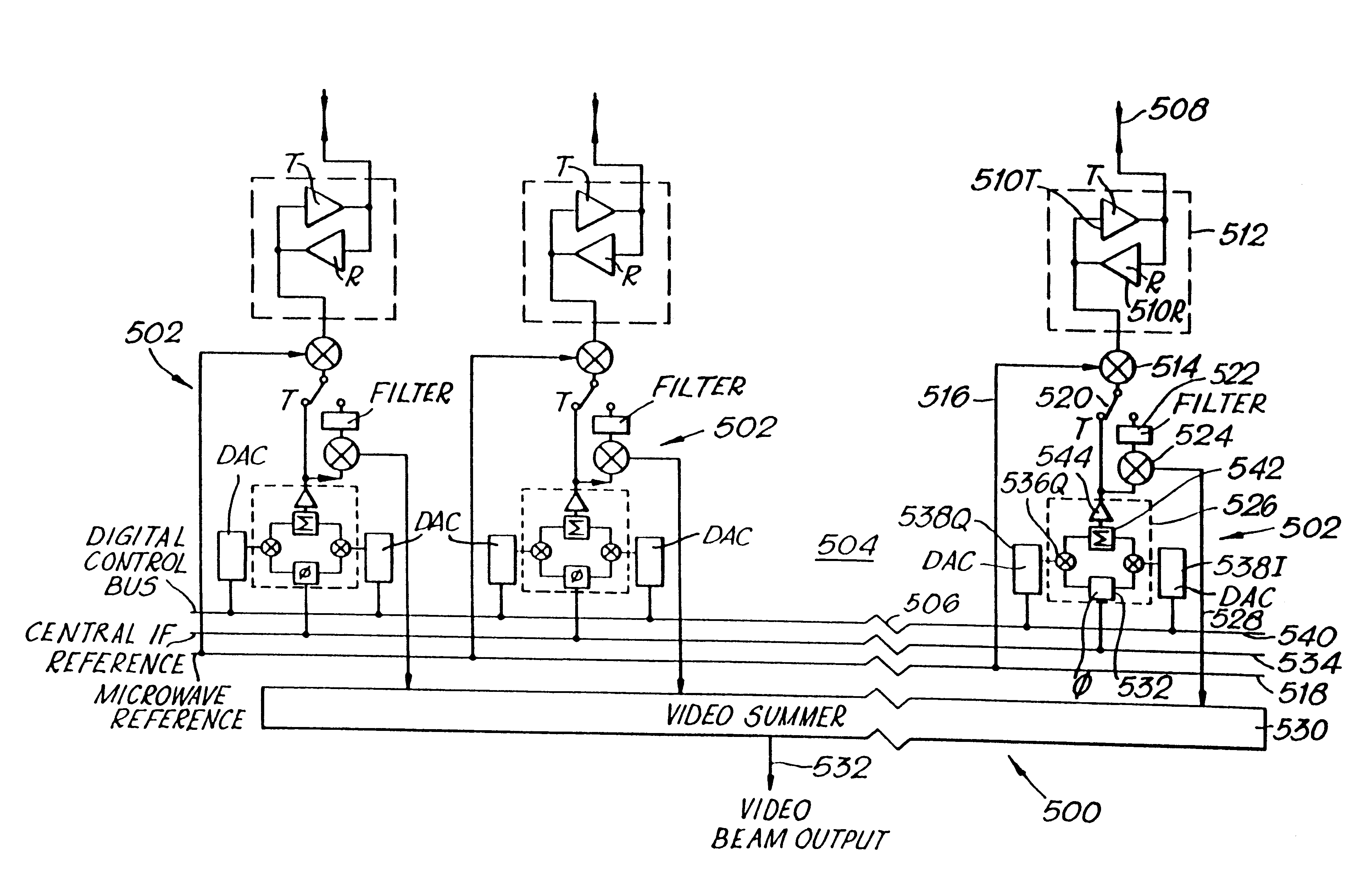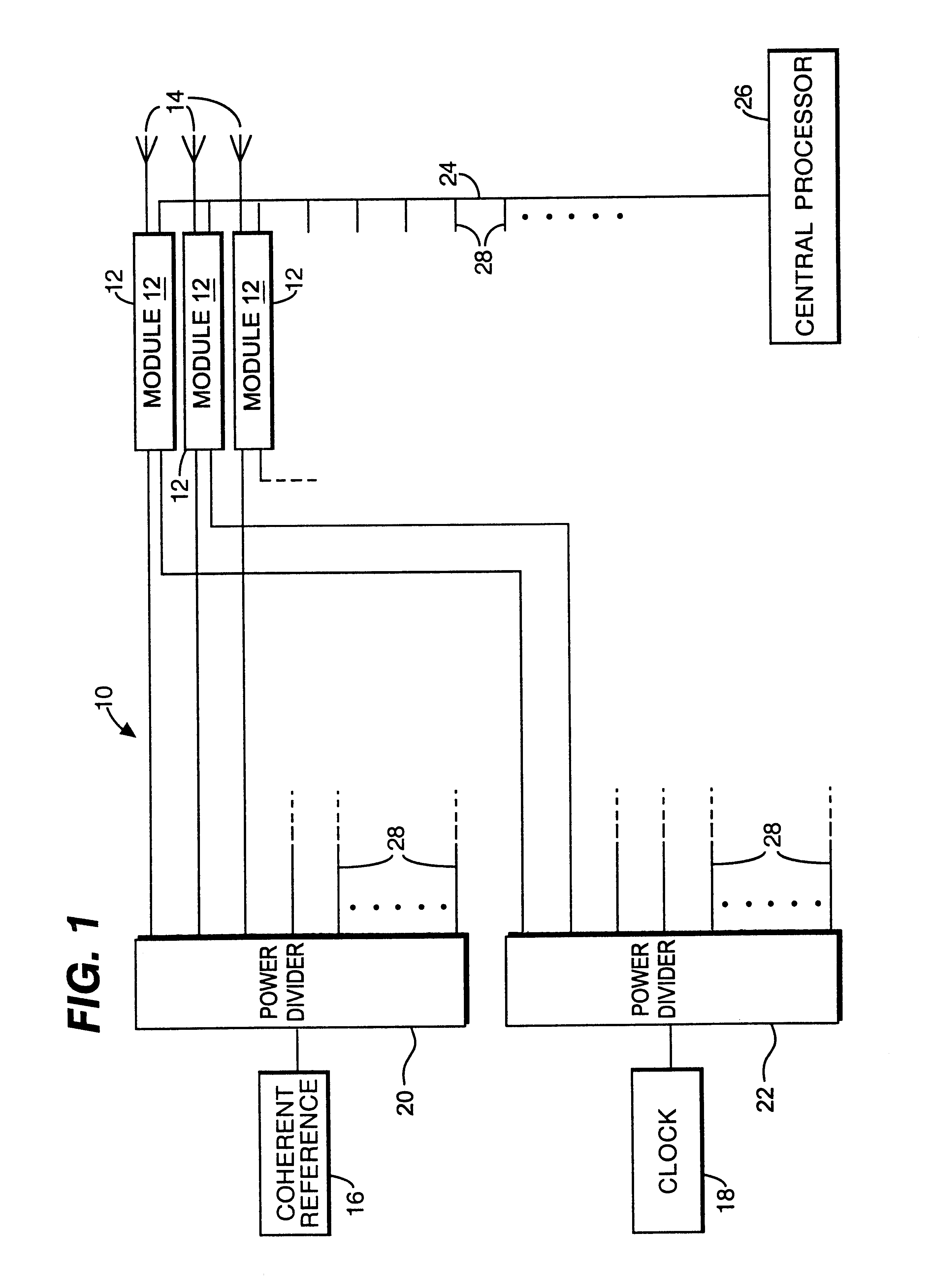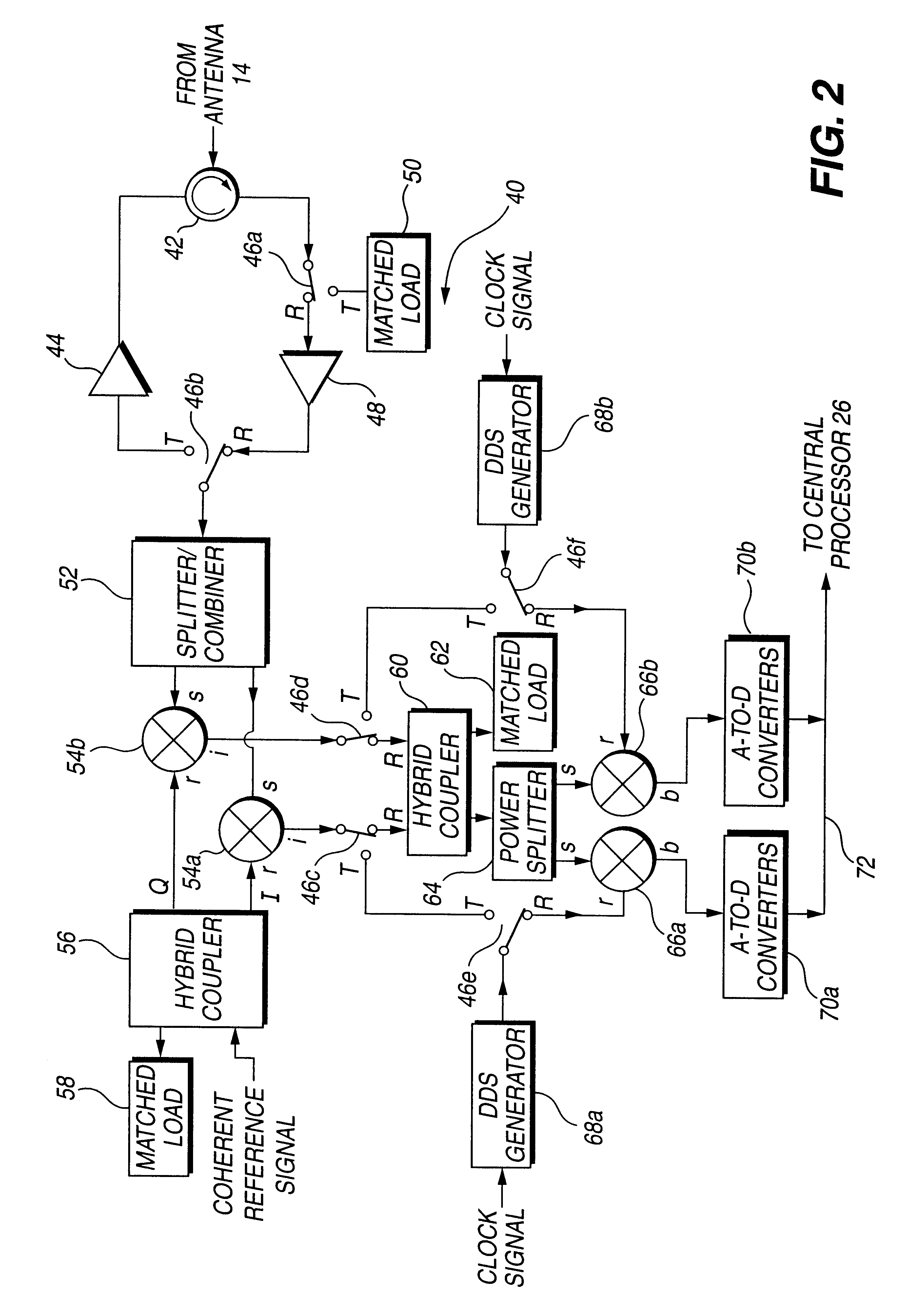Circuit module for a phased array
a phased array and circuit module technology, applied in the direction of instruments, measurement devices, antennas, etc., can solve the problems of limited beam scan rate, bulky, costly and imperfect, and high cost of both antenna and servomotor
- Summary
- Abstract
- Description
- Claims
- Application Information
AI Technical Summary
Benefits of technology
Problems solved by technology
Method used
Image
Examples
Embodiment Construction
Referring to FIG. 1, there is shown a schematic block diagram of the electronic circuitry of a phased array radar device indicated generally by 10. The device 10 comprises a number of individual electronic modules 12 each with a respective antenna radiating element 14. The modules 12 and antennas 14 are of like construction, and in some embodiments each antenna 14 may be mounted on the circuit board (not shown) of its associated module 12. The antennas 14 (of which three are shown) are arranged to form a planar array.
A coherent reference signal generator 16 and a clock signal generator 18 are connected via respective power dividers 20 and 22 to each of the modules 12. Output signals from the modules 12 pass via a bus 24 to a central processor 26, ie a digital computer. Only three modules 12 are illustrated explicitly, but, as indicated by discontinuous connections such as 28, the device 10 incorporates a much larger number of modules.
Referring now also to FIG. 2 and 3, there is show...
PUM
 Login to View More
Login to View More Abstract
Description
Claims
Application Information
 Login to View More
Login to View More - R&D
- Intellectual Property
- Life Sciences
- Materials
- Tech Scout
- Unparalleled Data Quality
- Higher Quality Content
- 60% Fewer Hallucinations
Browse by: Latest US Patents, China's latest patents, Technical Efficacy Thesaurus, Application Domain, Technology Topic, Popular Technical Reports.
© 2025 PatSnap. All rights reserved.Legal|Privacy policy|Modern Slavery Act Transparency Statement|Sitemap|About US| Contact US: help@patsnap.com



